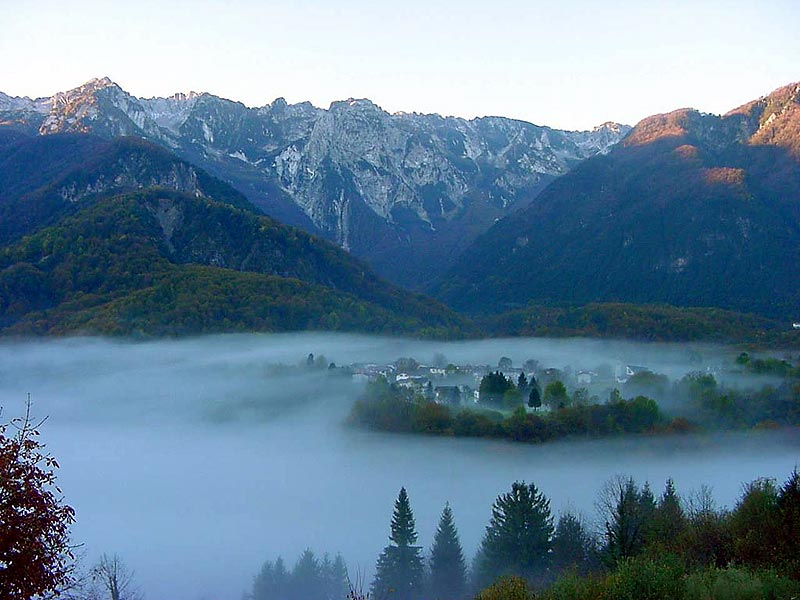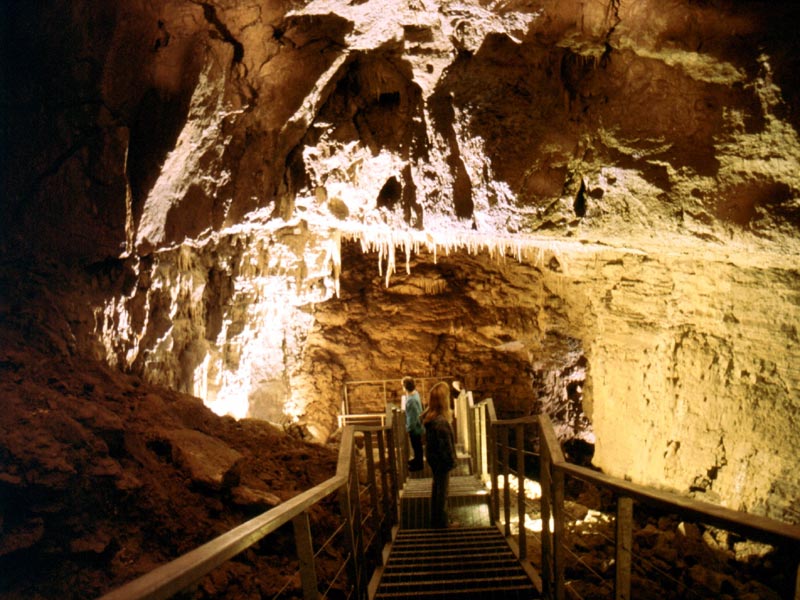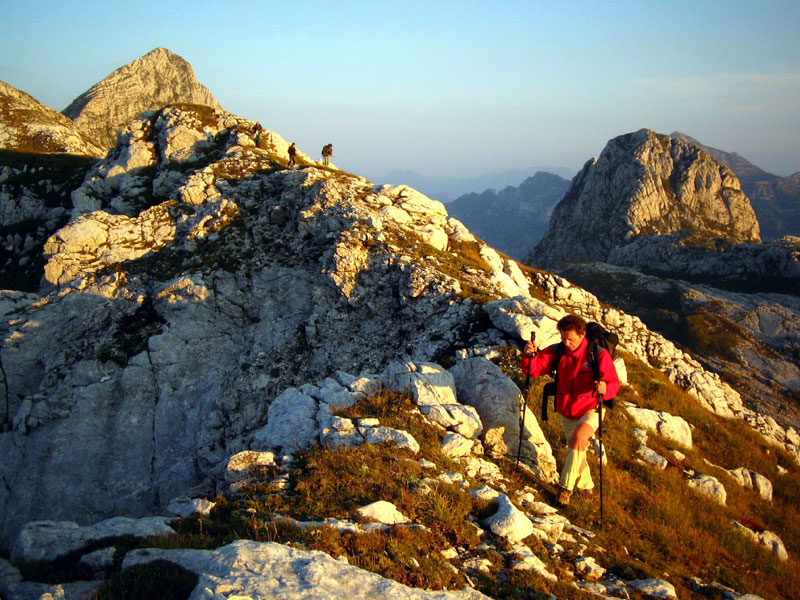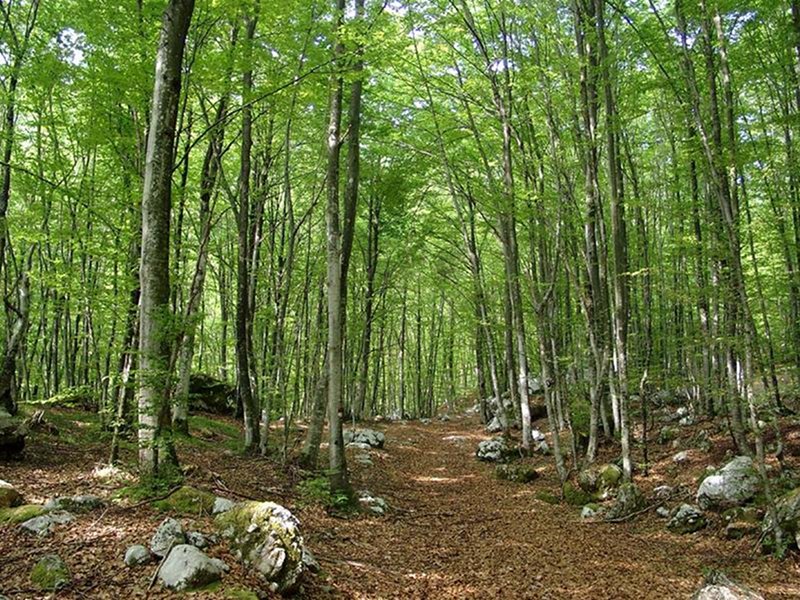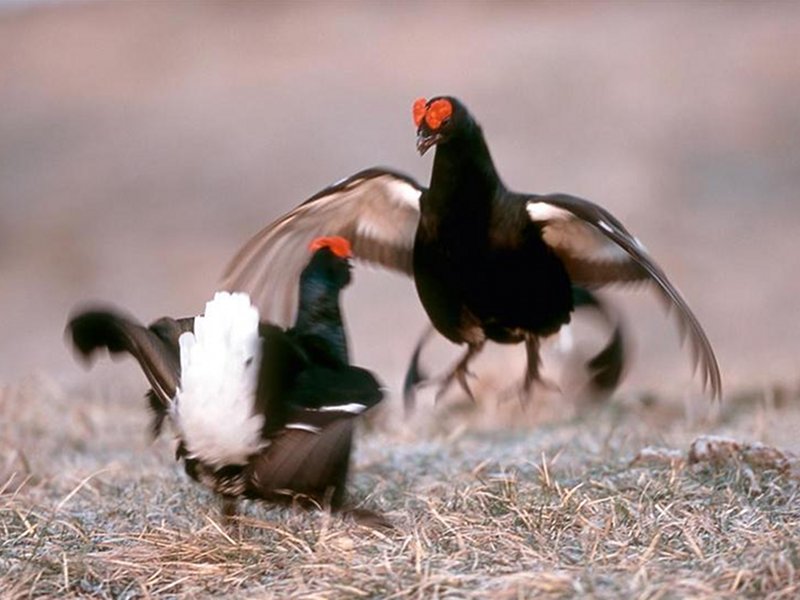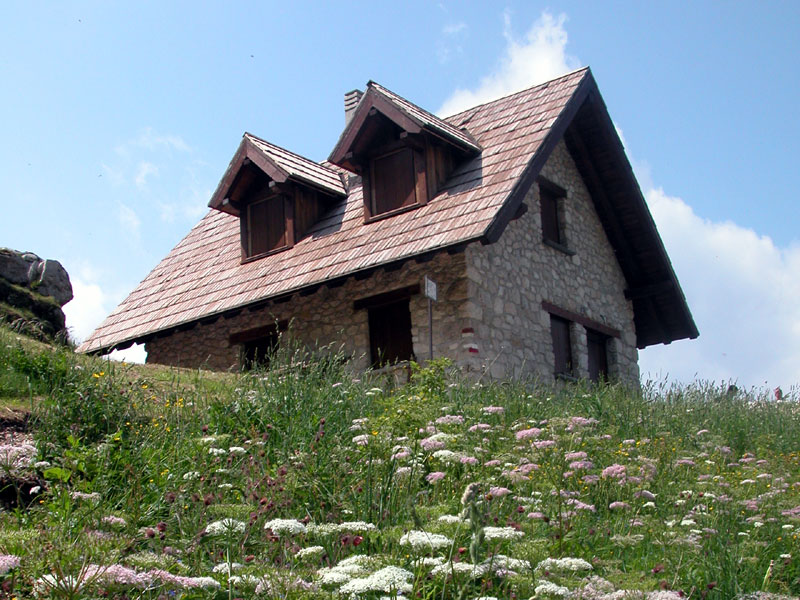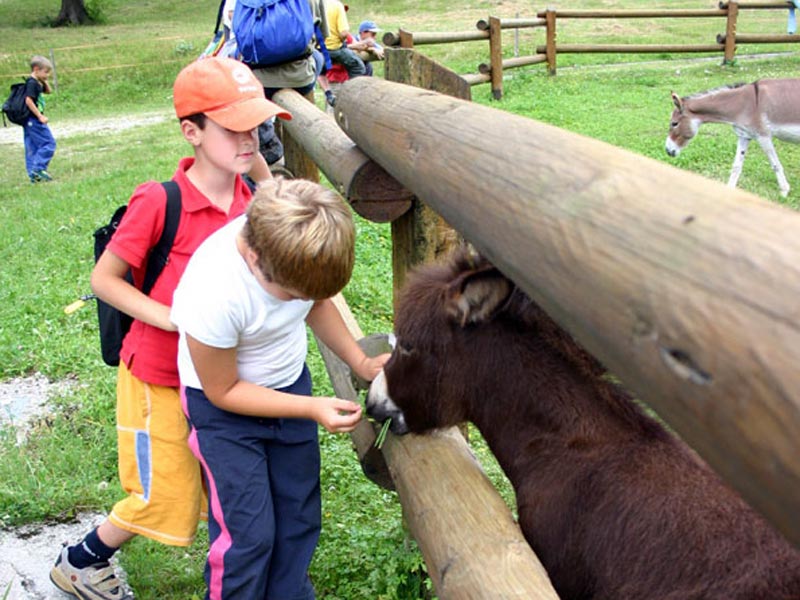Parco Naturale Regionale delle Prealpi Giulie
www.parcoprealpigiulie.itProtected Area
Identity Card
- Prealpi Giulie Regional Park:
- Land Surface Area: 9'402.00 ha
- Regions: Friuli Venezia Giulia
- Provinces: Udine
- Municipalities: Chiusaforte, Lusevera, Moggio Udinese, Resia, Resiutta, Venzone
- Establishment Measures: LR 42 30/09/1996
- PA Official List: EUAP0963
- Park Authority: Ente parco naturale delle Prealpi Giulie
- Further managed Protected Areas:
- Further info: www.parcoprealpigiulie.it - www.turismo.fvg.it
The Park
Prealpi Giulie Park includes the areas of the Municipalities of
Chiusaforte (552 ha), Lusevera (1,275 ha), Moggio Udinese (280 ha),
Resia (4,920 ha), Resiutta (1,050 ha), and Venzone (1,325 ha) for a
total area of 9,402 Ha; it is situated in the area between the Alps and
the Prealpi Giulie: in the middle of it, you can see the upper Val
Resia.
The Italian mountain slope of Mt. Canin, the whole plateau of
the "Foran del Muss", the "Bila Pec", and the "Col Ladris" are parts of
the Alps protected area; the Prealpi Giulie protected area includes the
chains of the Musi mountains, of Mt. Guarda and of Mt. Plauris which
descend towards the Friuli plain.
The southern mountains reach only
low altitudes (Mt. Plauris 1,858 m above sea-level), while the Alpine
mountains reach 2,500 meters (Mt. Canin 2,587 m above sea-level).
Speleology
The karstic phenomena, both superficial and subterranean, represent
without a doubt one of the main naturalistic aspects of Prealpi Giulie
Park.
The massif of Mt. Canin, with the hypogean complexes of Col
delle Erbe and Foran del Muss, the chain of Monti Musi with hundreds of
cavities and Val Resia with the Fontanon del Barman and the karstic
resurgences, are the three main fields of action of the intense
activity of research carried out by mainly regional speleological
associations.
Geomorphological Aspects
In the last million years the alpine region has alternatively undergone several glaciations and warm periods which caused glacial and fluvial erosions.
In the Park you can notice beautiful examples of glacial cirques. The most recent and impressive one is the plateau of the "Foran del Muss", thanks to which the area is considered as one of the most interesting speleological regions in Italy.
Nowadays you can still see a small glacier strip near the peak of the Mt. Canin.
Several glacial hanging valleys with differences in height of over 200m form high waterfalls. In some cases there are still traces of glaciers, formed in different periods after the last glaciation and which created the so called morainic arcs.
Moreover, you can see an example of fossil valley and a river capture in "Cjadinut".
Forest Aspects
Because of the intense rainfall of the region and of the small dimensions of the bottom of the mountain chains, the trees vegetation does not grow over the height of 1,600m. Higher there are wide meadows.
The climate is oceanic, characterized by quite mild temperatures and low temperature ranges.
The most sunny mountainsides are characterized by quite poor soils, which are permeable and not very deep. In these regions there are pinewoods of black pines and woods of hop hornbeams and manna-ashes with more rare examples of sycamore maples and beeches which supply firewoods; at higher altitudes and on better soils we find beech woodlands which supply above all wood to be manufactured.
The spruce fir woodlands grow where the climate tends to become continental.
At more than 1,400 m of height there are some larch woodlands and widespread may-lilies.
Flora
The above-mentioned climatic condition and the variety and the exposure of the soils determine the survival of an exceptional quantity of species that sheltered over there during the period of the expansion of glaciers.
On Mt. Canin, beside several endemic species, there are the only Italian sites of Gentiana froelichii ssp. froelichii and some of the few Thlaspi minimum, Aurinia petraea and Androsace helvetica.
On Mt. Plauris we can notice the highest concentration of endemisms in the region, especially of the Alpi Giulie, such as Saxifraga tenella, Campanula zoysii, Genziana froelichii, Ranunculus traunfellneri, Pedicularis julica, Festuca calva and Cerastium subtriflorum.
In the Park there are many other endemic and rare species, which, in some cases, represent the only examples in Italy.
Fauna
The fauna of the region, as well as the flora, presents a coexistence with elements of Southern, Oriental, and Circummediterranean origins.
Among the most numerous mammals we have to remember the Bear, regularly registered in a census since 1968 and the Lynx; the presence of the Marten and the Badger is remarkable, together with the Ibex which has been recently reintroduced.
There are also beech-martens, polecats, hares, roe deer, chamois, deer, and usually dormice. The Park is famous at an international level for its rare birds; in particular the presence of the Corncrake (Crex crex) and of the Rock Partridge (Alectoris graeca saxatilis) gives Prealpi Giulie this fame. The coexistence of typical species of high altitudes or of rocky faces (like the Fourgrouses, some birds of prey like the Eagle, the Peregrine, etc.), of cool and humid forestal environments (like the Honey-buzzard, the Tawny owl, the Tengmalm's owl, the Grey-headed Woodpecker etc.) is considerable with typical birds of Mediterranean areas such as the Short-toed Eagle, the Nightjar, and the Rock-Thrush, beside the Rock Partridge living in meadows and pastures.
It is interesting to see the herpetofauna and the entomofauna: in particular beetles, cerambycid and lepidopters.
Activities
The tourist activities and the human pressure are usually limited, especially on the southern mountains where the mountainsides morphology is very rough. In the area of Mt. Canin you can carry out both tourist tours or speleological trips. Thanks to the cableway you can easily reach a height of 1,800m. At the North-Eastern border of the site there is the skiing resort of Sella Nevea. In all the Southern area the traditional agricultural and farming activities have been considerably neglected, so that in most of the meadows and pastures there are more and more bushes. We are progressively losing a semi-natural landscape of great harmony.
Aims
According to the provisions of the Regional Decree n. 42/1996 regulating the protected area, the aims of the Park can be summed up in:
- Conservation, safeguard and recovery of the ecosystems
- Social and economic promotion
- Scientific research
- Didactics: education and training
- Experimentation




